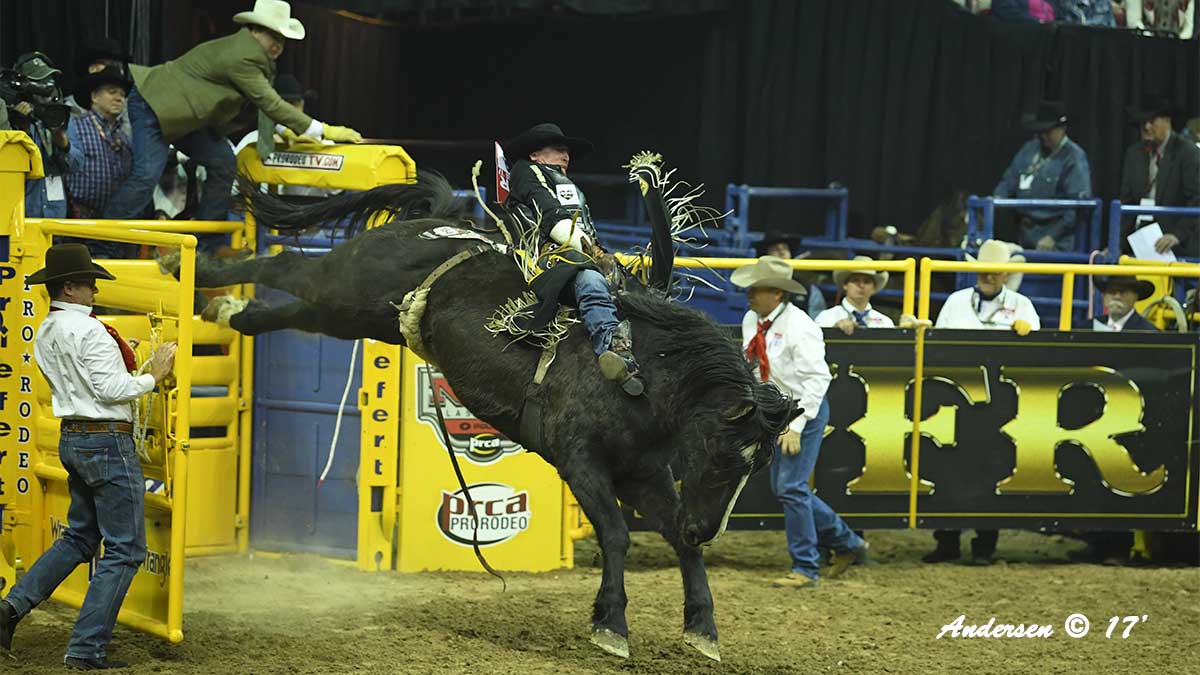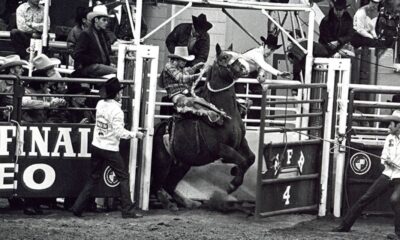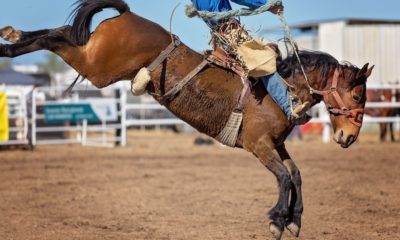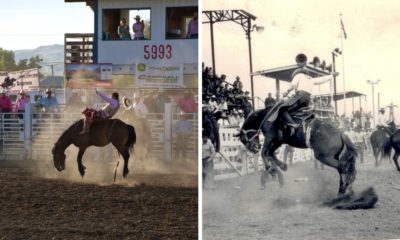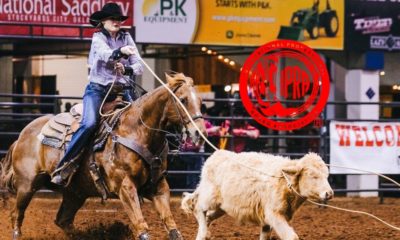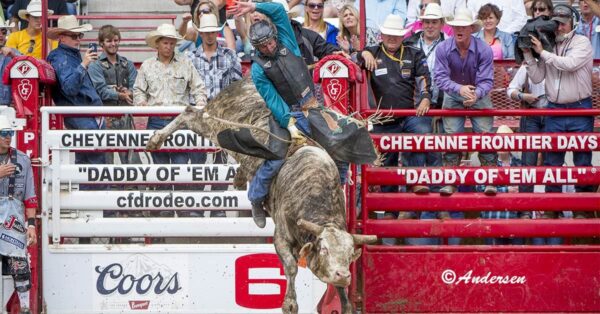Bareback Riding, like Saddleback Bronc Riding, traces its origins back to the Wild West, cowboys and ranches. It was derived from the practices of working cowboys to tame and break in horses for ranch and farm use.
Bareback Riding diverged from saddleback riding around the turn of the 20th century, and started its path to becoming a separately recognized professional rodeo sporting event. New as it was, equipment and techniques were still being designed and tested.
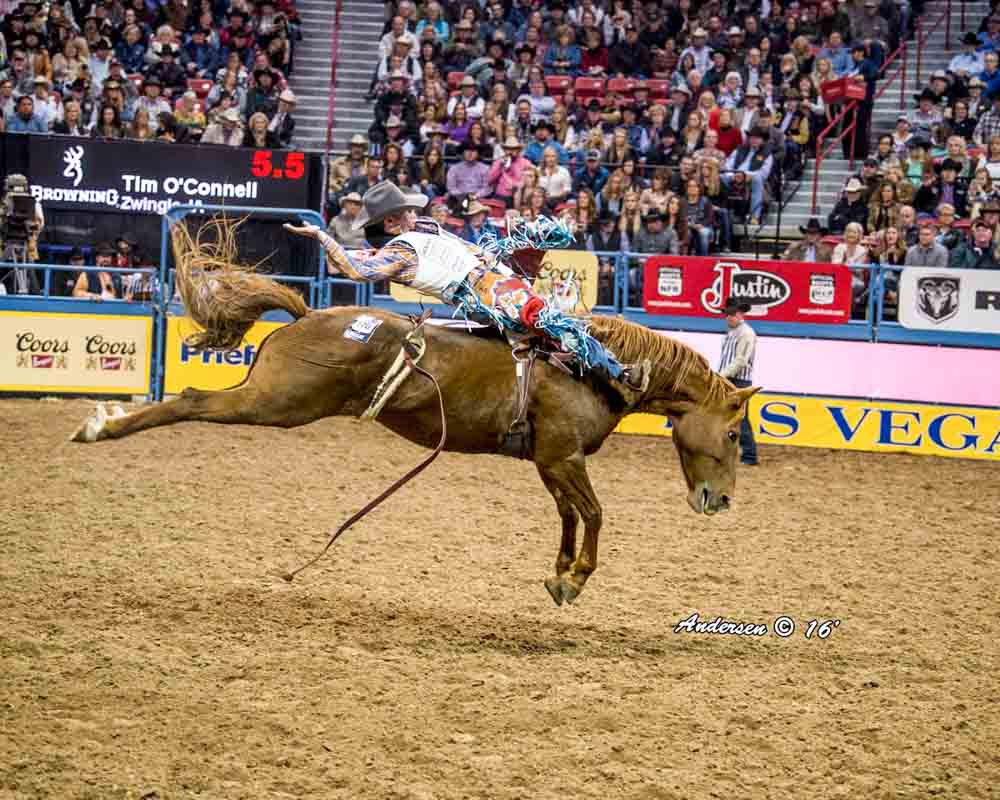
Tim O’Connell – Bareback Riding – Wrangler NFR Rodeo 2016 Go-Round Winners: Day 2 in Las Vegas © Ric Andersen Photos
It was not until Earl Bascom came along and developed the first one-handed rigging that the sport came to be conceptualized in its modern form. Called the “Father of the Modern-day Bareback Rigging”, his pioneering work laid the groundwork for the rigging systems used today and his influence and impact lives on.
Bareback Riding basically has the rodeo rider ride the horse as he would in a saddleback but without the support and help of a saddle. The rules and conditions are all the same, 8-second ride, your free hand cannot be used for support or brace, your legs cannot touch the animal and the heels have to be above the horse’s shoulder blades.

Despite this, it is actually a more challenging and dangerous event where the risk of injury is significantly higher. Falls, breaks, fractures and other such conditions are more regularly faced by bareback riders than saddleback riders and on average this decreases their quality of life over the long term.
The skill, balance, coordination, and horse handling ability requirements are much higher than that in saddleback riding. Despite this, it is becoming popular with cowboys due to being a more rugged and challenging form of the sport and a supposed ‘return to the old ways’ when ‘men were tough.’
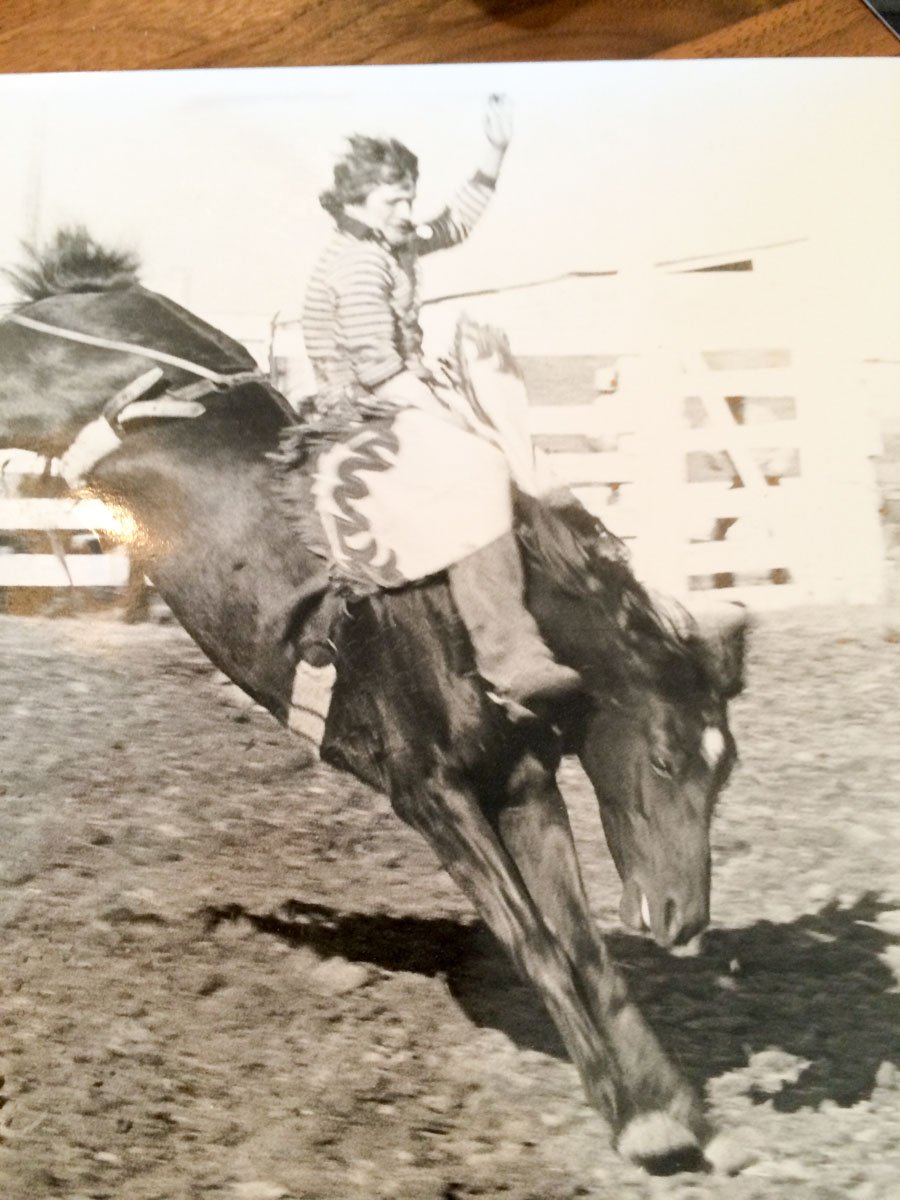
Chad Berger riding a bareback horse
Last Updated on 03/12/2025 by Jodi Erpelding
CLN Community Sponsor
